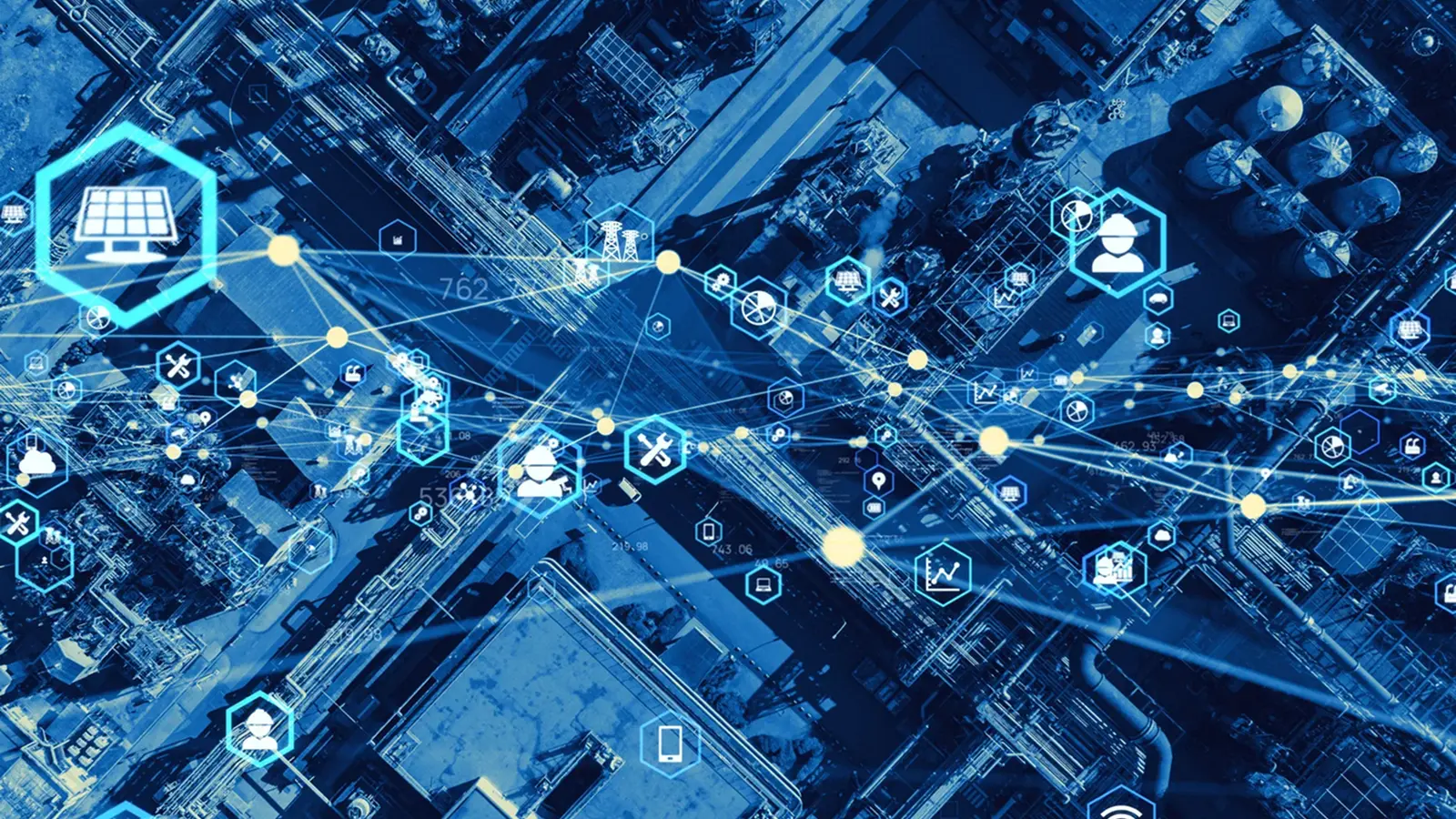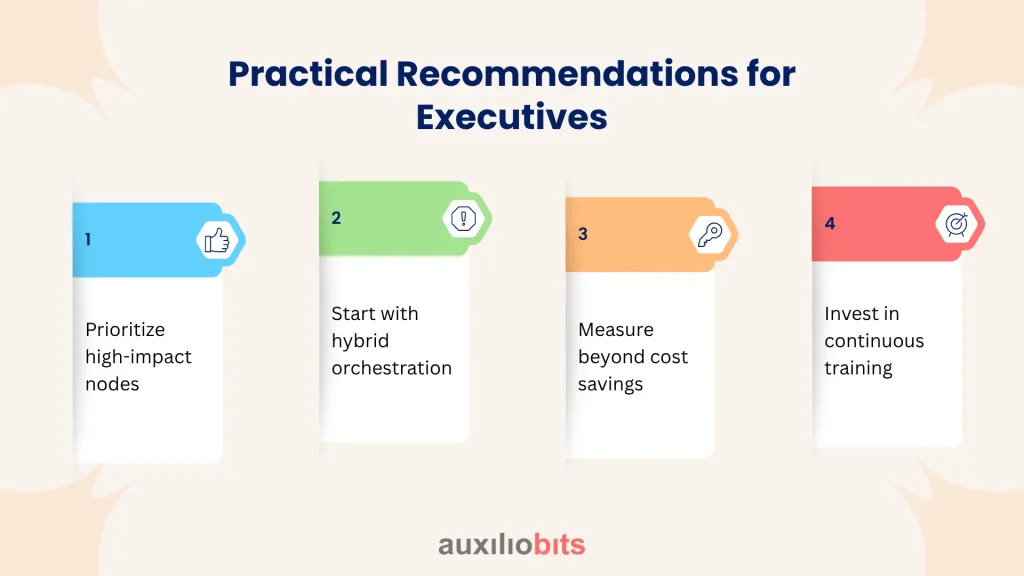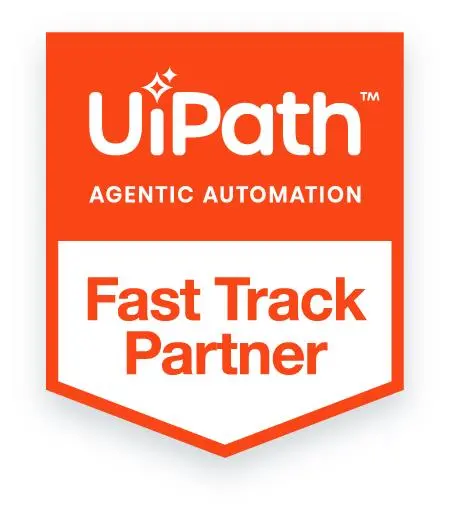
Key Takeaways
- Supply-chain disruptions are interconnected; a delay in one part of the network can cascade across multiple nodes, and traditional isolated monitoring often fails to address these chain reactions.
- Agentic orchestration enhances responsiveness, as autonomous agents monitor, predict, and adapt workflows in real-time, enabling faster, more informed decisions.
- Human oversight remains essential because while agents can simulate and act on complex scenarios, humans focus on high-value decisions, preventing over-reliance on automation.
- Implementation requires careful planning, including network mapping, clean data integration, defined autonomy boundaries, scenario testing, and continuous learning.
- Competitive advantage extends beyond risk mitigation, as organizations that embrace responsive agentic orchestration improve customer satisfaction, optimize working capital, strengthen supplier relationships, and free teams for strategic initiatives.
There is no denying that supply chains have been known to be a delicate balance of foresight, coordination, and timing. Nevertheless, the last few years- marked by global pandemics, weather events, geopolitical shocks, etc, have made that balance more precarious than ever before. One question that is on everyone’s mind is whether or not challenges will take place and how soon the system can respond when they happen. Conventional risk-mitigation frameworks, depending on manual alerts, siloed dashboards, and static plans, tend to fall short. Therefore, responsive agentic orchestration comes into being where autonomous agents actively monitor, predict, and adapt supply-chain workflows in real-time.
Also read: How are Multi-Agent AI Systems Redefining Supply Chain Optimization?
Why Traditional Supply-Chain Management Struggles
Let’s get started with an example. There is a small-sized electronics manufacturer that is known for sourcing semiconductors from Asia, assembling in Europe, and distributing all over the world. By any chance a delay occurs, it can surely give rise to issues like shipments being held at the ports, customers facing backorders, and so much more. Traditional mitigation strategies normally consist of the following:
- Buffer inventories: Stockpiling critical components.
- Redundant suppliers: Maintaining multiple vendors for the same part.
- Manual monitoring: Teams tracking shipments, alerts, and status updates via ERP systems.
Every approach comes with its own perks and disadvantages. There are high chances that manual monitoring will come with numerous mistakes. In addition to this, it is also slow and reactive. Redundant suppliers ask for a lot of money and may not be completely independent in a geopolitical crisis. There are real-life examples to highlight these gaps. In the year 2021, there was a semiconductor shortage, where companies with robust contingency plans experienced certain delays. The reasons behind these delays occurred because their systems could not anticipate port congestion, component shortages, and cross-border transport delays side by side.
Disruptions may rarely take place, but they spread through interconnected networks. A shipment delayed from one supplier can force a factory to reschedule production. So there are chances that it may create a backlog at the distribution center. Traditional systems steps treat different, missing chain reactions. A more responsive approach sees the entire network together, understanding how a delay can cascade and adjust plans accordingly.
What Responsive Agentic Orchestration Brings to the Table
At its core, agentic orchestration depends on software agents – autonomous digital units that are capable of perception, argument, and action within predetermined obstacles. Unlike rigorous workflow automation, these agents constantly evaluate the real-world conditions and decide when human inspection is required.
Key capabilities include:
- Real-time monitoring: Agents ingest data from IoT sensors, GPS trackers, ERP systems, weather feeds, and even social media to detect potential disruptions.
- Dynamic decision-making: Instead of issuing static alerts, agents simulate alternative actions—rescheduling shipments, reordering orders, or adjusting production schedules.
- Collaborative orchestration: Multiple agents communicate with each other to prevent conflicting tasks, essentially creating a distributed command center.
- Learning from outcomes: Over time, agents refine their models, based on which decisions reduce or at least minimize costs.
The nuance here matters. Agents don’t just automate tasks—they reason about trade-offs. For example, a shipment may be delayed but still reach a high-priority customer if combined with partial stock from another warehouse. An agent can evaluate multiple options in seconds—a task impossible for human teams without analysis.
Case Example: A Consumer Goods Company
A consumer goods firm faced repeated disruptions due to seasonal demand spikes and supplier volatility. They implemented an agentic orchestration system layered on top of existing ERP and WMS software. Results included:
- Proactive rerouting: When a port strike delayed inbound containers, agents analyzed alternative routes using rail, road, and secondary ports. Delivery lead times improved by 18%.
- Dynamic production scheduling: Agents shifted manufacturing sequences to prioritize products at risk of stockouts, reducing backorders by 22%.
- Supplier risk scoring: Agents continuously monitored supplier reliability and geopolitical risk indicators, enabling preemptive order adjustments.
Interestingly, the company found that not all agentic suggestions were feasible. Sometimes, agents overestimated secondary supplier capacity. Human intervention remained essential, but the orchestration framework ensured teams were only engaged in high-value decision-making, not constant firefighting.
Building an Effective Agentic Supply Chain
Deploying responsive agentic orchestration isn’t plug-and-play. Organizations often underestimate the complexity of integrating autonomous agents into existing supply-chain processes. A pragmatic approach includes:
1. Mapping the network holistically
- Identify key nodes, dependencies, and choke points.
- Understand variability in lead times, supplier reliability, and transport modes.
2. Data integration and hygiene
- Agents are only as good as the data they see. Incomplete, outdated, or siloed data can produce misleading recommendations.
- Real-time IoT feeds, transport tracking APIs, and ERP/WMS synchronization are essential.
3. Defining agent autonomy boundaries
- Decide which actions agents can execute automatically (e.g., rerouting shipments) and which require human approval (e.g., canceling a multi-million-dollar order).
- Include escalation rules to prevent conflicts between agents and human operators.
4. Simulation and scenario testing
- Before deployment, simulate various disruption scenarios: port closures, supplier defaults, transportation strikes, or sudden demand spikes.
- Measure how agents respond and adjust decision logic accordingly.
5. Continuous learning loops
- Use historical data and outcome feedback to refine agent heuristics.
- Avoid rigid rules; agents must evolve as supply chains and risk landscapes change.
Nuances and Challenges
It would be naive to suggest that agentic orchestration is a magic bullet. Several pitfalls deserve attention:
- Over-reliance on automation: Agents can handle a lot, but they’re still constrained by model assumptions and data accuracy. Unexpected black swan events—like a sudden regulatory embargo—may still require human ingenuity.
- Alert fatigue: Poorly calibrated agents can over-communicate, creating noise rather than actionable insights. A balance between sensitivity and precision is crucial.
- Cultural resistance: Supply-chain teams accustomed to manual control may initially distrust agentic decisions. Change management is as important as technical implementation.
- Integration complexity: Many enterprises have heterogeneous IT landscapes. Agents often need to bridge legacy systems, modern cloud platforms, and third-party APIs.
Agentic Orchestration in Multi-Tier Supply Chains
One of the most powerful applications is across multi-tier supply chains, where raw materials, components, and finished goods flow through complex, interdependent networks. Traditional visibility often ends at tier-1 suppliers. Agents, however, can monitor deeper tiers using a combination of digital signals:
- Supplier APIs and portals: Accessing inventory and shipment data beyond immediate partners.
- Satellite imagery and port activity monitoring: Estimating congestion and delays indirectly.
- Natural language monitoring: Parsing news, government announcements, and social media to detect emerging risks.
In practice, this allows proactive mitigation. A tier-3 supplier in Southeast Asia may report delays due to flooding; the agent evaluates the impact on tier-1 orders and proposes rerouting raw materials to alternative factories. Humans review only the high-impact decisions.
Practical Recommendations for Executives
For supply-chain leaders considering agentic orchestration, a few grounded strategies emerge:

- Prioritize high-impact nodes: Start with products, suppliers, or logistics hubs where disruptions carry the largest financial or reputational risk.
- Start with hybrid orchestration: Agents support human decisions initially. Gradually increase autonomy as trust and data reliability grow.
- Measure beyond cost savings: Track service-level improvements, on-time delivery, and reduction in reactive firefighting hours.
- Invest in continuous training: Agents improve with feedback, but humans must calibrate, contextualize, and validate decision logic.
Beyond Risk Mitigation: Competitive Advantage
Companies that master responsive agentic orchestration don’t just survive disruption—they gain strategic leverage. Faster reaction times, optimized inventory, and resilient multi-tier networks translate into:
- Higher customer satisfaction: Reduced stockouts and faster delivery.
- Lower working capital requirements: Leaner buffers and smarter allocations.
- Better supplier relationships: Proactive coordination avoids surprises and fosters collaboration.
- Enhanced decision-making bandwidth: Teams focus on strategic initiatives rather than operational firefighting.
A subtle but significant point: the advantage is rarely in the technology itself but in how organizations integrate it into culture, processes, and decision frameworks. Agents amplify intelligence; they don’t replace it.
Looking Ahead
Supply chains will continue to face volatility, but tools like agentic orchestration make volatility manageable. As AI models become more capable and connected ecosystems expand, we can envision systems that continuously anticipate, simulate, and act—reducing disruption impact while enabling smarter operations. That said, success depends on nuance, context, and continuous human oversight.
Disruption will never disappear. But companies willing to embrace responsive agentic orchestration can navigate complexity with far more agility than competitors clinging to spreadsheets and static alerts.








